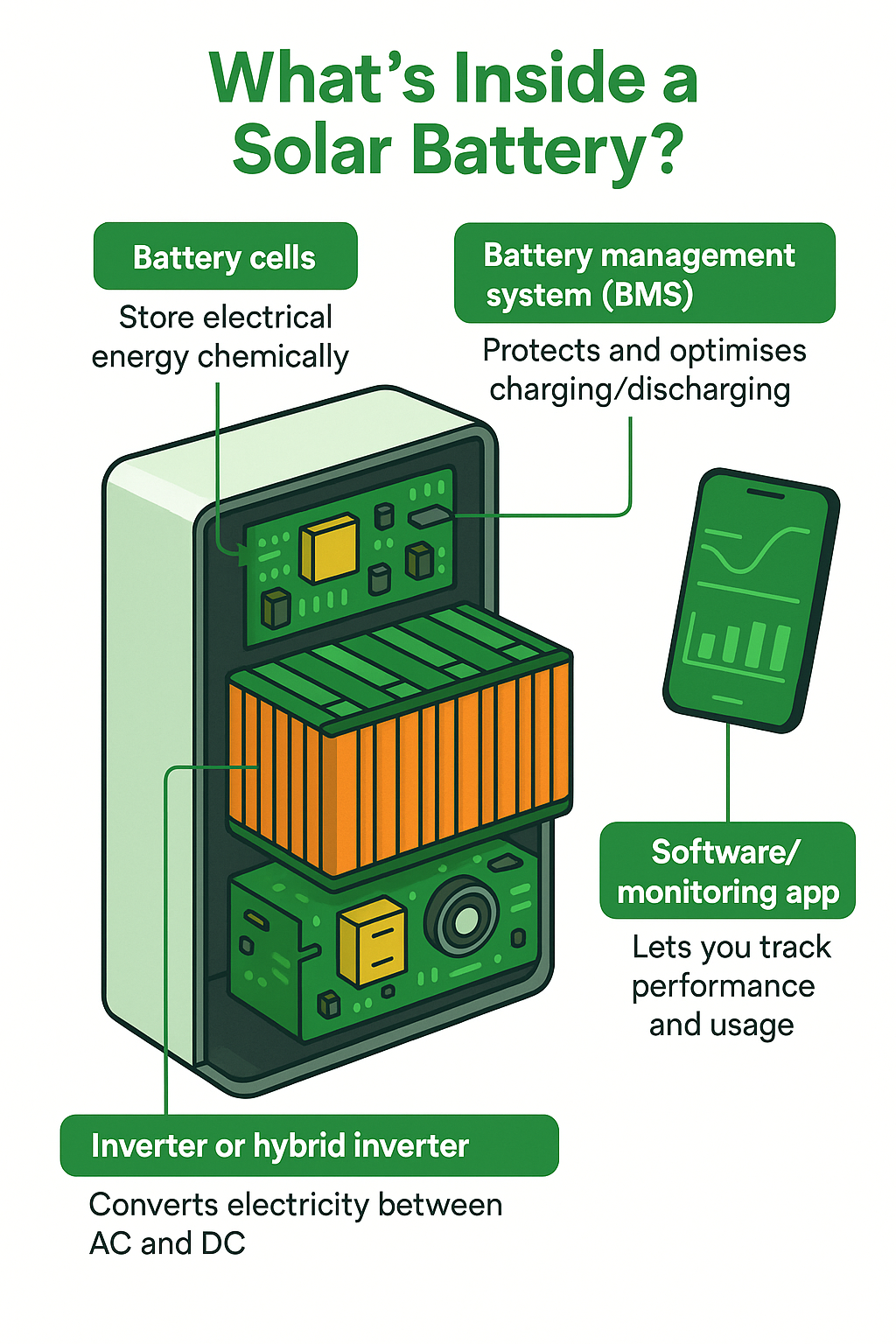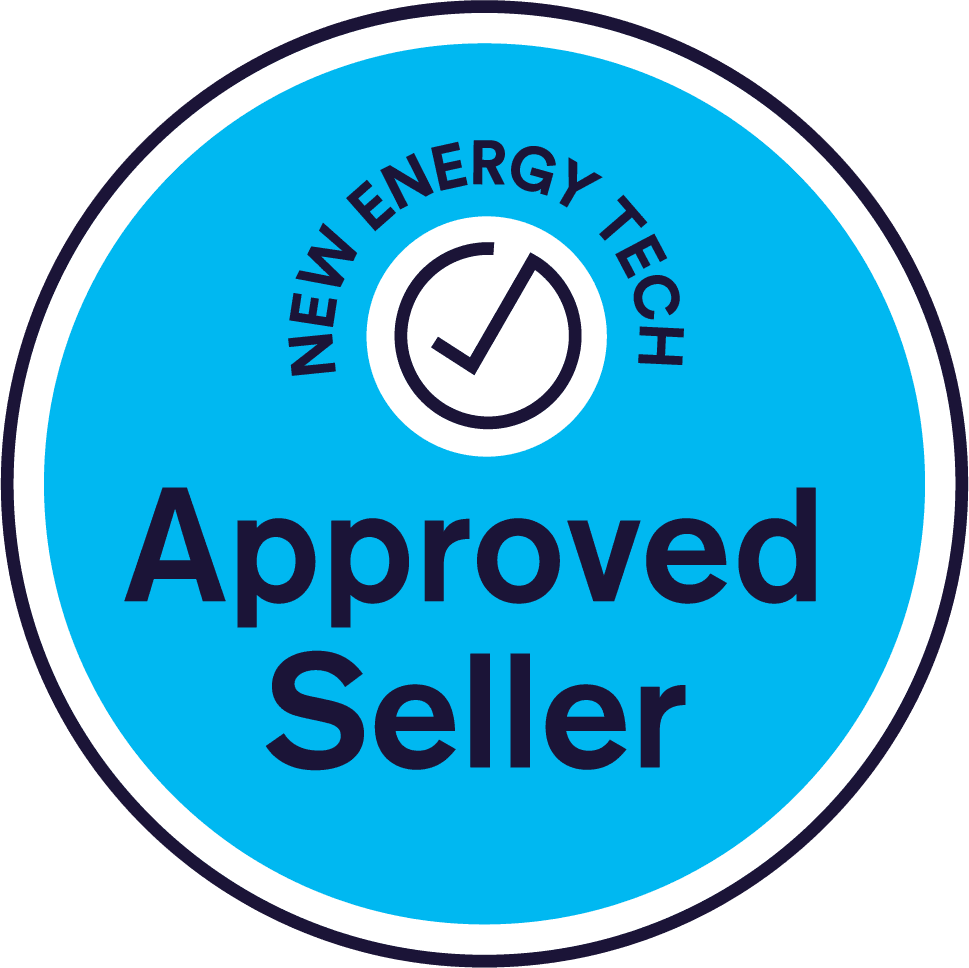How Do Solar Batteries Work?
Quick Answer: So, how do solar batteries work? A solar battery stores excess electricity from your solar panels so you can use it later—usually at night or during power outages—helping you reduce grid reliance, lower energy bills, and maximise the value of your solar investment.
Introduction: Why This Matters for Australian Homeowners
If you’ve invested in solar, you already know the thrill of watching your electricity bills drop. But there’s a catch—most solar panels produce the most energy when you’re not home to use it. Without a battery, that extra energy is sent to the grid for a tiny credit (often as low as 2¢ per kWh and potentially $0 soon).
A solar battery changes the game. It lets you store your solar power and use it later, giving you energy independence, better ROI, and even backup during blackouts.
How a Solar System Works Without a Battery
Before we talk batteries, here’s the simple version of a grid-connected solar setup:
- Solar panels on your roof generate electricity when sunlight hits them.
- Power flows into an inverter, which converts DC electricity into AC for your home.
- Your home appliances use this power first.
- Any leftover energy is exported to the grid for a credit from your electricity retailer.
- At night, when your panels stop producing, you draw power from the grid at your normal retail rate.
The problem? Your feed-in tariff is a fraction of what you pay for grid power.
How Solar Batteries Change the Equation
When you add a solar battery, the flow changes:
- Panels produce power → inverter converts to AC.
- Your home uses what it needs instantly.
- Excess power is stored in the battery instead of going to the grid.
- At night, your home draws from the battery first, then the grid if needed.
This means you’re using your own stored solar power instead of buying electricity at peak rates.
What’s Inside a Solar Battery?

Most residential solar batteries in Australia are lithium-ion—the same technology found in EVs and smartphones. Key components include:
- Battery cells: Store electrical energy chemically.
- Battery management system (BMS): Protects and optimises charging/discharging.
- Inverter or hybrid inverter: Converts electricity between AC and DC.
- Software/monitoring app: Lets you track performance and usage.
Benefits of Solar Batteries for Homeowners
1. Maximise Solar ROI
Instead of selling your energy for cents and buying it back for dollars, you use more of what you produce.
2. Energy Independence
Rely less on your electricity retailer and more on your own mini power station.
3. Backup Power
Keep essentials like lights, fridge, and internet running during blackouts.
4. Join a VPP (Virtual Power Plant)
Earn extra income by allowing your battery to support the grid at peak times.
Solar Battery Efficiency & Sizing
Choosing the right battery size depends on:
- Daily energy use (kWh)
- Solar system size
- Your tariff structure
- Backup needs
As a rule, many homes start with 10–13 kWh for meaningful savings and blackout protection. If you want to learn more about the best solar batteries out there this 2025, check out this blog: Best Solar Batteries 2025
Solar Battery Costs & Payback in Australia
Here’s a general guide for premium batteries in 2025:
| Battery Model | Capacity (kWh) | Approx. Installed Price (AUD) | Warranty (Years) | Notable Features |
|---|---|---|---|---|
| Tesla Powerwall 3 | 13.5 | $14,000–$16,000 | 10 | Whole-home backup, VPP-ready |
| BYD Battery-Box Premium HVM | 11–22 | $12,000–$18,000+ | 10 | Modular, scalable |
| Sungrow SBH Series | 9.6–25.6 | $11,000–$17,000 | 10 | High efficiency, great value |
Tip: Check the Best Solar Batteries in 2025 for in-depth reviews.
Government Rebates & Incentives
The Governments Cheaper Home Batteries rebate is now live and covers approx. 30% of the cost of a solar battery up to 50kWhs, Here are the basics:
- Claim $350 per kWh of battery installed up to 50kWhs
- One claim per property (so choose your battery size carefully)
- Rebate value reduces at the end of each year through 2030
- Batteries must be Virtual Power Plant (VPP) ready
For more details of how this rebate works, CLICK HERE.
What about Virtual Power Plants.
A virtual Power Plant is basically a network of battery owners that has given permission to a central aggregator to control their battery. By doing this, collectively the batteries can help the grid when it is struggling to produce enough power to meet demand. In return, you are given credits from letting the grid use this power which improves the battery savings, sometimes drastically. The most popular VPP right now is Amber Electric.
Are Solar Batteries Worth It in 2025?
Yes—if designed properly. For many Australian homeowners, a solar battery can:
- Cut electricity bills by up to 80–100%
- Provide blackout protection
- Increase property value
- Future-proof against rising power costs
Now, that you fully understand how do solar batteries work, do you want to take it to the next step and learn what’s the best fit for your system?
FAQs
1. How long do solar batteries last?
Most last 10–15 years, depending on usage and quality.
2. Can a solar battery run my whole house?
Yes, but it depends on size. Before buying a solar battery you should have a detailed consultation with an experienced solar and battery designer.
3. Do solar batteries work on cloudy days?
Yes, but they’ll charge slower. You can still draw from the battery at night.
4. Can I add a battery to my existing solar system?
Usually yes—especially if you have a compatible inverter or add a retrofit battery.
5. How big should my battery be?
This will depend on how you use energy. The average battery size we are currently installing is 24kWhs but some homes only need 8kWhs and some need way more. The best place to start is by looking at your power bill to see how much energy you are using daily. If you have existing solar installed you can also see how much you are exporting daily which will give you an idea of how much solar you have left after using it, to charge a battery. It is best to talk to a professional before trying to size a battery though.
Key Takeaways
- A solar battery stores excess solar energy for later use.
- It helps you use more of your own power, reducing grid reliance and bills.
- Choose a reputable, long-warranty brand and size it for your household needs.
- With rebates and VPP income, payback is faster than ever.
About GI Energy
GI Energy is an award-winning Australian solar and battery installation company with over a decade of experience. Known for ethical practices, high-performance systems, and exceptional after-install support, GI Energy is trusted by homeowners, councils, schools, and major businesses nationwide.
Written by Daniel McCabe, founder and strategist at GI Energy. With over 16 years in the energy industry — from procurement to solar and holistic energy management — Daniel is focused on helping Australians take a balanced, long-term approach to their energy needs. His insights combine real-world experience with a strong belief in intelligent, ongoing support — not just one-off solar installs.















